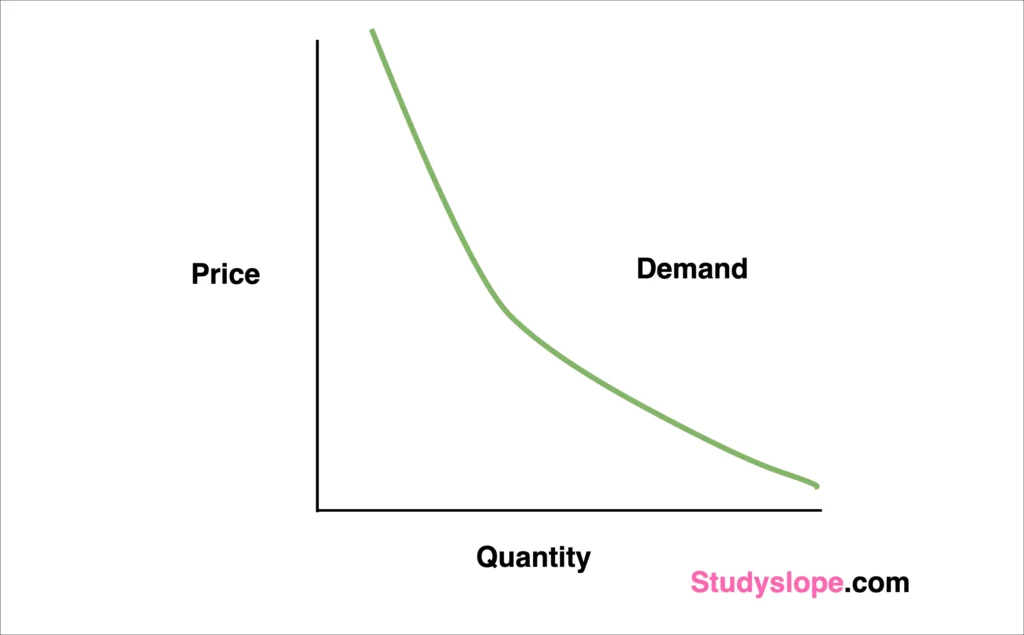“Product XYZ is in high demand in the market,” we hear all the time, but what does it mean? In a market economy, what elements influence product demand? In order to grasp this, let’s examine the notion of demand and the several factors that impact market demand. Let’s explore the meaning of demand and Determinants of Demand in a market.
Table of Contents
What is Demand?
Demand is just a person’s strong desire to buy something and be willing to pay the price for it. In simple terms, demand is the amount of goods that people are ready and willing to buy at different prices at the same time. Choices and preferences are what demand is all about, and they can be explained in terms of cost, value, profit, and other factors.
The amount of goods that customers choose depends on how much the goods cost, how much other goods cost, how much money the customer makes, and their likes and habits. The amount of a good that a customer is willing to buy, can afford, and can handle based on current prices of goods and the customer’s likes and interests is called demand for the good.

In a given time period, the demand curve shows how the amount of a good or service that people want changes as its price does. Most of the time, the price is plotted on the left-hand vertical axis, and the amount that is wanted is plotted on the right-hand horizontal axis. It’s easy to see how changes in price can affect how much of a good or service people are willing to buy by looking at this graph.
What is Determinants of Demand?
The determinants of demand are the factors that affect the demand for a product or service. To understand the process by which individuals make purchasing decisions and the potential for those decisions to be influenced, economists analyse the determinants of demand. Additionally, they examine the extent to which these factors influence the demand for particular products or services. Consequently, it is essential to observe and analyse the determinants of demand to understand market dynamics.
Five Determinants of Demand
There are many Determinants of Demand, however we will see the top five Determinants of Demand in this article.
Product Cost:
A product’s demand tends to rise or fall in response to variations in its price. The likelihood of more purchases increases as the price decreases. The opposite is true: fewer individuals will be willing to purchase it if its price goes up. Assuming all other factors influencing the product remain constant, this is the case.
Consumers Income:
People have a tendency to purchase more products when they have more money. Demand for various goods and services goes up in parallel with earnings. The demand for these things often declines when incomes reduce.
Costs of Related Items:
Complementary Goods: Products that work well together, such as bread and butter, are called complementary goods. Many people believe that an increase in the price of bread would lead to a decline in butter purchases.
Substitute Goods: Tea and coffee are examples of substitute goods since they are interchangeable. The demand for tea may fall if its price were to rise because consumers would opt to buy more coffee instead.
Consumer Expectations:
People may purchase more of a product at the current price point if they anticipate an increase in their income or if they expect that the product’s price will rise in the future. However, if they predict a decline in income or prices, they may delay purchasing, which would reduce demand.
Number of Buyers:
The quantity of individuals considering purchasing a thing is another factor that affects its demand. In general, demand rises when more individuals are interested in purchasing a thing. Demand decreases when interest decreases.
Also View: Price Elasticity of Demand
FAQs
What is Determinants of Demand?
Determinants of demand refers to desire of a consumer to purchase goods and services and ability to pay a price for the goods and services purchased
What are the 5 determinants that affect demand?
The five main determinants of demand are Product Cost, Consumers Income,Costs of Related Items,Consumer Expectations and Number of Buyers.
